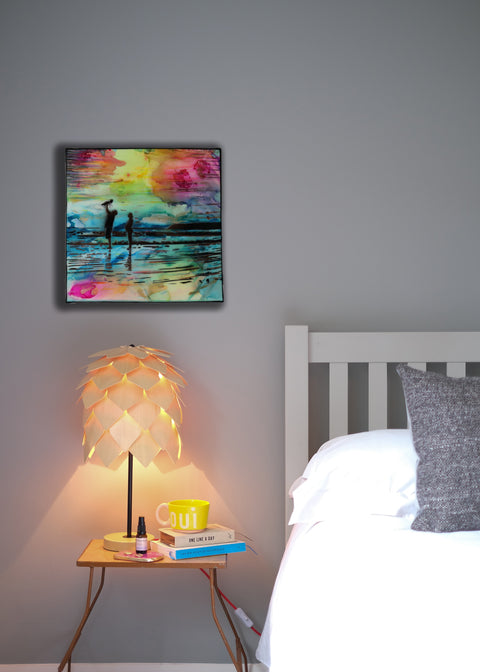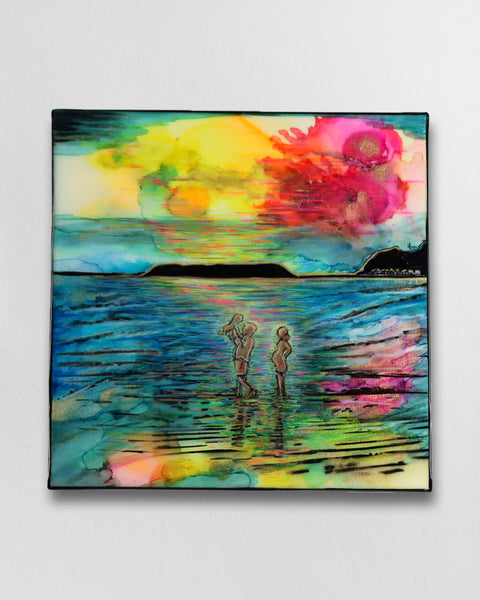Tītahi Bay Paintings
Tītahi Bay beach is in Titahi Bay, a suburb of Porirua, in the Greater Wellington Region in the North Island of New Zealand. The beautiful beach lies at the foot of a short peninsula on the west coast of the Porirua Harbour, to the north of Porirua city centre.
There you'll see surfers, people swimming and fishing. Always swim between the flags. Tītahi Bay beach is popular as it is a gently shelving sandy beach, one kilometre long, that's great for children, picnics, surfers, joggers and (at certain times) dog walking. There are some really cute boatsheds and rock pools for sea creature discovery. There is a Surf Life Saving Club located in the centre of the Bay. The south beach access road offers grassed areas, picnic benches, and public washrooms.
Titahi Bay Beach is sheltered by Mana Island and the sandy beach slopes gently into the ocean allowing swimmers to get a good distance into the water. While usually sheltered from swells it can be dangerous for inexperienced beach users in rougher conditions with strong rips and swells. Surf lifeguards patrol this site during the summer months. Parking can be found along Beach Road and toilets and changing facilities are located at the surf club.
This site is monitored as a part of Greater Wellington Regional Council’s Recreational Water Quality Monitoring Programme, which is specifically designed to inform the public about the suitability of various sites across the region for swimming and other recreational activities.
Titahi Bay began its life as a series of fishing villages and pa for Ngati Ira making it one of the largest and oldest suburbs in Porirua City.
Polynesian navigator Kupe landed at Komanga Point, 3 kilometres west of Titahi Bay in the 10th Century before 1200 CE, leaving an anchor stone, Te Punga o Matahorua, which today can be seen at the Museum of New Zealand Te Papa Tongarewa.
The Bay area was settled by Maori before the arrival of Europeans and several pa sites are located nearby. Titahi Bay began its life as a series of fishing villages and pa for Ngati Ira making it one of the largest and oldest suburbs in Porirua City.


